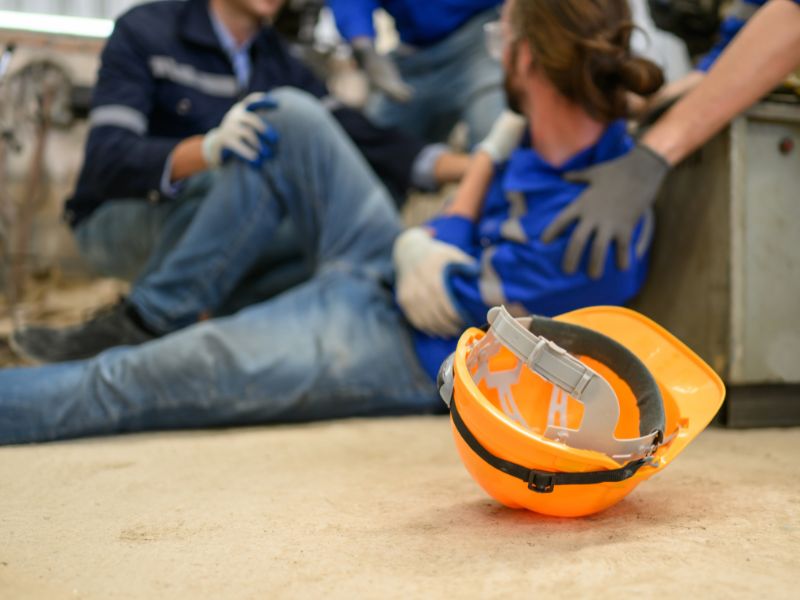
What Are the Health and Safety Responsibilities of Employees?
A lot of people don’t realise that health and safety isn’t just something the employer is responsible for — employees also have legal duties when it comes to protecting themselves and others in the workplace. These duties aren’t optional, and failure to meet them can have serious legal consequences.
This article explores the health and safety responsibilities employees have under UK law, including relevant legislation such as the Health and Safety at Work etc. Act 1974, and additional duties under regulations like COSHH and Work at Height Regulations.
What the Law Says: Section 7 of the Health and Safety at Work Act 1974
The primary legislation that outlines employee duties is the Health and Safety at Work etc. Act 1974 (often referred to as HSWA). Section 7 of the Act states:
“It shall be the duty of every employee while at work—
(a) to take reasonable care for the health and safety of himself and of other persons who may be affected by his acts or omissions at work; and
(b) as regards any duty or requirement imposed on his employer or any other person by or under any of the relevant statutory provisions, to cooperate with him so far as is necessary to enable that duty or requirement to be performed or complied with.”
This means employees have two core legal responsibilities:
- Look after their own health and safety, and that of others
- Cooperate with their employer on any health and safety duties
These aren’t just guidelines — they are enforceable in law.
Other Regulations That Place Duties on Employees
While the HSWA provides the overarching framework, several other regulations also place specific responsibilities on employees, including:
- Control of Substances Hazardous to Health (COSHH) Regulations 2002: Employees must follow procedures for handling hazardous substances and wear PPE as instructed.
- Work at Height Regulations 2005: Employees are required to use the correct safety equipment, avoid taking unnecessary risks, and report defects in equipment.
- Manual Handling Operations Regulations 1992: Employees must use proper lifting techniques and comply with training provided.
- Provision and Use of Work Equipment Regulations (PUWER) 1998: Employees must use machinery in accordance with their training and report any unsafe equipment.
These are just a few examples, but they show how widespread employee responsibilities are across different working environments.
Real Case: Operations Manager Prosecuted After Fatal Fall
In March 2025 an operations manager, was prosecuted following the death of an employee who fell 20 feet while removing steel sheets from a disused tower.
- The work was conducted without proper planning, risk assessment, or suitable access equipment.
- He failed to take reasonable care or to cooperate with the employer’s legal duties under health and safety legislation.
Outcome:
- Convicted under Section 7 of the Health and Safety at Work etc. Act 1974
- Fined £8,500 and ordered to pay £8,500 in costs
🔗 Source: HSE Press Release – March 2025
Real Case: Train Driver Prosecuted After Signal Passed at Danger
In June 2016 a train driver was prosecuted after his train passed a signal at danger near Wootton Bassett Junction, stopping across a high-speed mainline junction.
- The incident was attributed to mishandling of safety systems and braking procedures.
- He had failed to take reasonable care in accordance with Section 7 responsibilities.
Outcome:
- Convicted under Section 7 of the Health and Safety at Work etc. Act 1974
- Sentenced to four months in prison (suspended)
- Ordered to perform 80 hours of unpaid work
🔗 Source: Wikipedia – 2015 Wootton Bassett Rail Incident
What Happens if Employees Ignore Their Responsibilities?
Failure to follow health and safety rules can lead to:
- Disciplinary action from the employer
- Increased workplace risk, potentially harming others
- Prosecution by the HSE, as shown in the cases above
- Criminal records, fines, or even custodial sentences in serious cases
It’s not just about compliance — it’s about protecting lives.
Practical Steps Employees Should Take
To meet your legal responsibilities, employees should:
- Attend and engage with all health and safety training
- Use PPE correctly and consistently
- Follow safe systems of work
- Report unsafe conditions or near misses promptly
- Never take shortcuts with safety
Conclusion
Health and safety responsibilities are not just the employer’s concern. Employees have clearly defined duties under the law, and failure to uphold them can result in serious consequences.
By understanding and acting on these responsibilities, employees contribute to a safer, healthier, and legally compliant workplace for everyone.
Want to ensure your team is meeting their legal responsibilities? Find a verified Health and Safety Consultantor submit a brief and we’ll match you with an expert.



